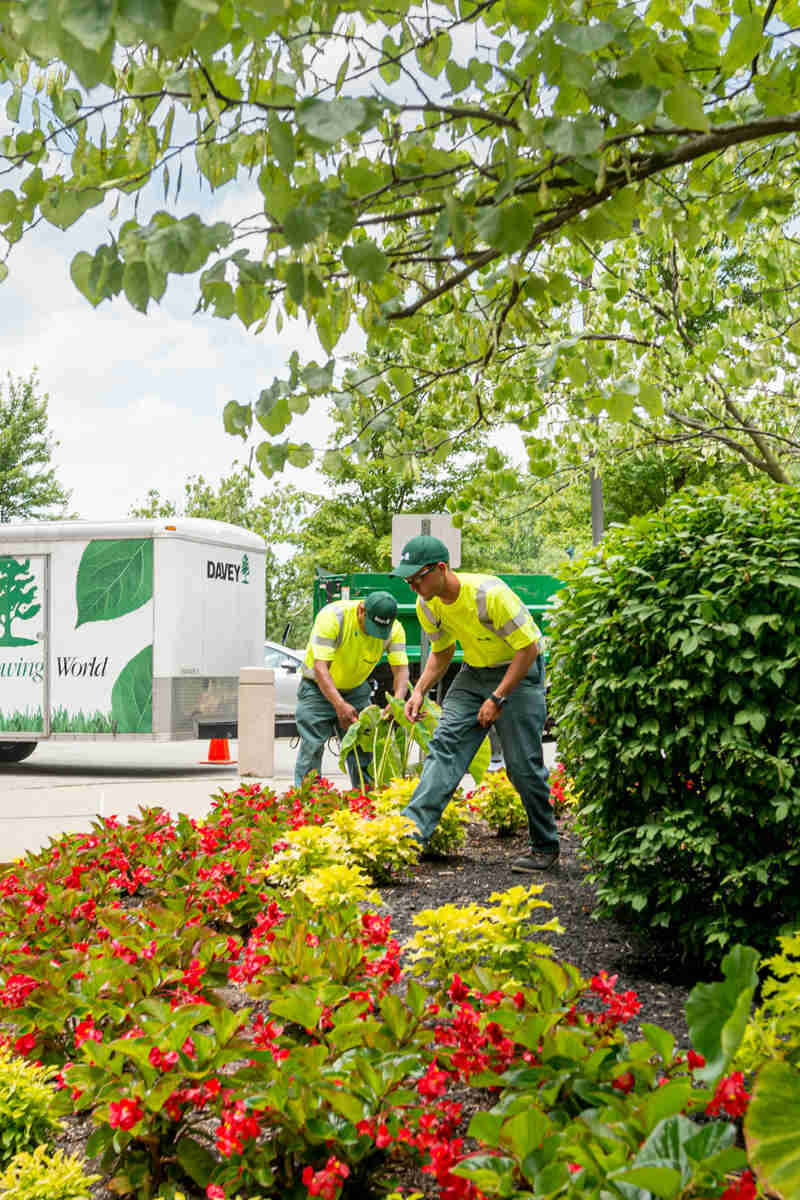When you take care of the landscape on a commercial property, you have to manage it all year long – and that includes during winter.
Although snow and ice can transform your facility into a winter wonderland, it also can bring with it some side effects which need to be managed.
While winter can create some beautiful scenery, it can also bring some nasty weather which will amplify the danger of injuries to people and property – things commercial building owners and managers don’t want to have to deal with.
Let’s look at the proper ways to clean up winter storm tree damage and why you should make it a priority on your winter maintenance list.
Why Commercial Properties Should Care About Trees After a Storm
In many areas of the country, wind and ice storms can cause damage to trees.
Tree damage from winter storms comes in the form of weakening branches (especially where they attach to tree trunks) from harsh winds or heavy snow and ice; broken branches or trunks from lightning strikes; and even downed trees as a result of inadequate or shallow root systems.
Your trees are the largest living assets you have on your facility that provide shade, color, and visual appeal.
As such, they need to be maintained properly to ensure they stand tall, strong, and live long lives vs. becoming hazards and threats on your site. Care includes regular fertilization, as well as pruning out damaged, broken, or diseased branches.
With proper care, you mitigate any risks on your property and continue to reap the benefits of a great landscape.
Watch the video above to learn about the importance of managing tree risk on your commercial property.
Safety First! Check To See…
You might be wondering what to do after a winter storm to assess any damage and recognize any potential hazards before accidents happen.
Just as you remove snow and salt driveways, walkways, and parking lots regularly to keep ice from building up, it is a good idea to check for icicles hanging over walkways and building entrances. Remove these hazards so they don’t cause any injuries, you want to also look at your trees.
Post-storm, look for:
- Fallen tree branches or fallen trees. You’ll want to clean up this damage and also check to see if there are other branches that may have been impacted by the storm. These should be removed to eliminate future risks.
- Utility lines damaged by tree branches are hazards which should be monitored as well. You never want to touch trees or branches that have fallen onto utility lines. Call your utility company right away so they can clean this up for you, restore power if that is an issue, and return this area to a safe zone on your commercial property.
Inspect and Assess Tree Damage
You should have a professional inspect all trees on your property after severe storms, regardless of their previous health status.
A tree can present a hazard on your commercial property if a defective part, such as a broken branch, poses such a risk where its structural failure can cause property damage or personal injury. Trees can also become hazardous if they obstruct routine activities that people on your property do every day. These include walking back and forth from the parking lot to an entrance or even blocking drivers’ vision when they are trying to pull out of the property.
As you walk your property checking for tree damage from winter storms, look for these common signs:
- Broken tree branch or limb
- Hanging tree branch or limb
- Split branch or trunk
- Leaning tree
- Broken or damaged cabling
- Trees or branches that are bent over from the weight of snow and ice
Will Damaged Trees Recover?
There is never a guarantee, but trees damaged by snow and ice do have a chance to recover as the weather warms up. Some of this depends on the type of damage and the health or age of the tree.
Young trees, for instance, can recover quickly, as long as the trunk is intact, and the structure remains appropriate for future branching. A healthy, mature tree can also recover even after suffering several major damaged limbs.
Can trees recover from ice storm damage? Trees that are weighted down by ice and snow should be left alone. If they are healthy, most of the time they recover by spring as the weather warms. This is particularly true if they are properly pruned because their branches are well distributed and their crowns are balanced.
What Not To Do After a Winter Storm
When you encounter trees weighed down by snow and ice, there are a few things you should never do, or you risk damaging them further.
First, never stand under a tree that is piled high with snow and ice after a storm. This protects you from a branch or limb falling down on you.
Next, don’t try to remove the ice and heavy snow on tree branches, whether you’re brushing it off or shaking the branches. This risks further weakening the tree and injuring anyone nearby.
Also, if there is a tree in contact with a utility line, never try to remove it yourself. Always call the utility company to ensure your safety and the safety of others on your commercial property.
The Importance of Hiring a Certified Arborist
Proper tree care takes knowledge and expertise. Two qualities that are a focus of the Davey Tree professionals. Hiring a certified arborist ensures a proper tree assessment to tell you what it needs, helps you retain its value, and provides just the right care to mitigate safety hazards.



